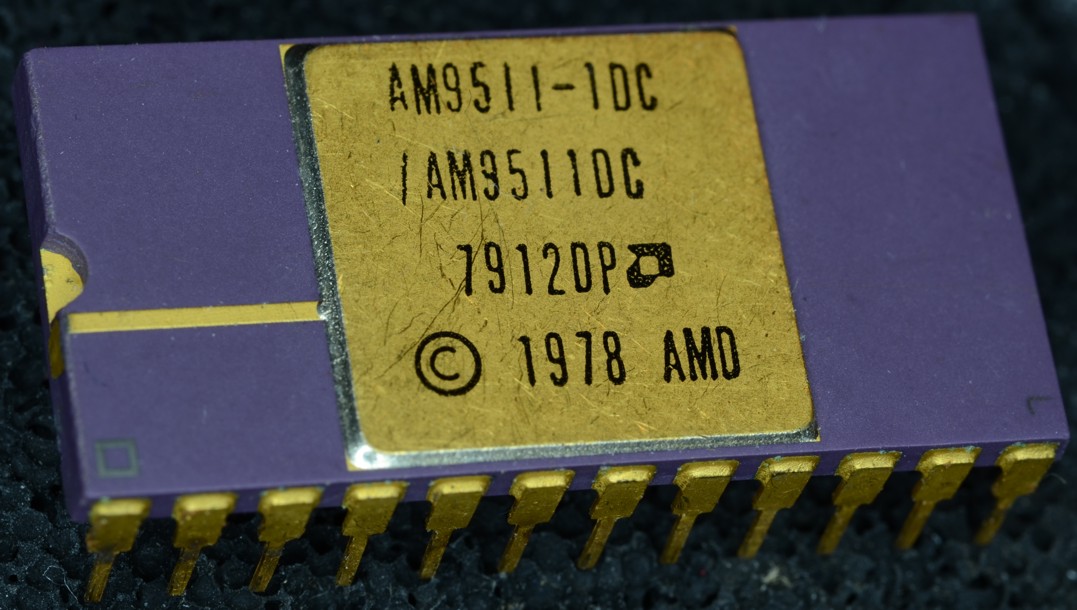|
Otrona
Otrona Advanced Systems Corporation was an early Colorado manufacturer of business portable CP/M and MS-DOS compatible computers. Otrona Attaché and 8:16 The American company's first major product, the ''Otrona Attaché'', came out in April 1982 and folded up to the size of a fat briefcase painted off-white with orange trim. When set up for use, the carrying handle swung under the chassis to prop it up for easier viewing. A keyboard could be removed from one end, revealing a small 5-inch monochrome CRT and two 360Kb "half-height" 5.25 inch floppy disk drives. The system featured a Zilog Z80A microprocessor at running 4 MHz, used the CP/M version 2 operating system with 64K of RAM and, with installation of an Intel 8086 microprocessor expansion card, a modified version of Microsoft's MS-DOS operating system. The RAM can be upgraded to 640Kb and had several programs in ROM. It contained a single speaker for sound output (which could be set to give audible feedback when ... [...More Info...] [...Related Items...] OR: [Wikipedia] [Google] [Baidu] |
Kaypro
Kaypro Corporation was an American home and personal computer manufacturer based in Solana Beach, California, in the 1980s. The company was founded by Non-Linear Systems (NLS) to compete with the popular Osborne 1 portable microcomputer. Kaypro produced a line of rugged, luggable CP/M-based computers sold with an extensive software bundle which supplanted its competitors and quickly became one of the top-selling personal computer lines of the early 1980s. Kaypro was exceptionally loyal to its original customer base but slow to adapt to the changing computer market and the advent of IBM PC compatible technology. It faded from the mainstream before the end of the decade and was eventually forced into bankruptcy in 1992. History Kaypro began as Non-Linear Systems (NLS), a maker of electronic test equipment, founded in 1952 by Andrew Kay, the inventor of the digital voltmeter. In the 1970s, NLS was an early adopter of microprocessor technology, which enhanced the flexibility of pro ... [...More Info...] [...Related Items...] OR: [Wikipedia] [Google] [Baidu] |
Zilog Z80
The Zilog Z80 is an 8-bit computing, 8-bit microprocessor designed by Zilog that played an important role in the evolution of early personal computing. Launched in 1976, it was designed to be Backward compatibility, software-compatible with the Intel 8080, offering a compelling alternative due to its better Integrated circuit, integration and increased performance. Along with the 8080's seven Processor register, registers and flags register, the Z80 introduced an alternate register set, two 16-bit index registers, and additional instructions, including bit manipulation and block copy/search. Originally intended for use in embedded systems like the 8080, the Z80's combination of compatibility, affordability, and superior performance led to widespread adoption in video game systems and home computers throughout the late 1970s and early 1980s, helping to fuel the personal computing revolution. The Z80 was used in iconic products such as the Osborne 1, TRS-80, Radio Shack TRS-80, Col ... [...More Info...] [...Related Items...] OR: [Wikipedia] [Google] [Baidu] |
Boulder, Colorado
Boulder is a List of municipalities in Colorado#Home rule municipality, home rule city in Boulder County, Colorado, United States, and its county seat. With a population of 108,250 at the 2020 United States census, 2020 census, it is the most populous city in the county and the List of municipalities in Colorado, 12th-most populous city in Colorado. It is the principal city of the Boulder metropolitan statistical area, which had 330,758 residents in 2020 and is part of the Front Range Urban Corridor. Boulder is located at the base of the foothills of the Rocky Mountains, at an elevation of above sea level. The city is northwest of the Colorado state capital of Denver. Boulder is a college town, hosting the University of Colorado Boulder, the flagship and largest campus of the University of Colorado system as well as numerous research institutes. Starting in 2027, Boulder will become the new home of the Sundance Film Festival. History Archaeological evidence shows that Boul ... [...More Info...] [...Related Items...] OR: [Wikipedia] [Google] [Baidu] |
Random-access Memory
Random-access memory (RAM; ) is a form of Computer memory, electronic computer memory that can be read and changed in any order, typically used to store working Data (computing), data and machine code. A random-access memory device allows data items to be read (computer), read or written in almost the same amount of time irrespective of the physical location of data inside the memory, in contrast with other direct-access data storage media (such as hard disks and Magnetic tape data storage, magnetic tape), where the time required to read and write data items varies significantly depending on their physical locations on the recording medium, due to mechanical limitations such as media rotation speeds and arm movement. In today's technology, random-access memory takes the form of integrated circuit (IC) chips with MOSFET, MOS (metal–oxide–semiconductor) Memory cell (computing), memory cells. RAM is normally associated with Volatile memory, volatile types of memory where s ... [...More Info...] [...Related Items...] OR: [Wikipedia] [Google] [Baidu] |
Lotus 1-2-3
Lotus 1-2-3 is a discontinued spreadsheet program from Lotus Software (later part of IBM). It was the first killer application of the IBM PC, was hugely popular in the 1980s, and significantly contributed to the success of IBM PC-compatibles in the business market. The first spreadsheet, VisiCalc, had helped launch the Apple II as one of the earliest personal computers in business use. With IBM's entry into the market, VisiCalc was slow to respond, and when they did, they launched what was essentially a straight port of their existing system despite the greatly expanded hardware capabilities. Lotus's solution was marketed as a three-in-one integrated solution: it handled spreadsheet calculations, database functionality, and graphical charts, hence the name "1-2-3", though how much database capability the product actually had was debatable, given the sparse memory left over after launching 1-2-3. It quickly overtook VisiCalc, as well as Multiplan and SuperCalc, the two Visi ... [...More Info...] [...Related Items...] OR: [Wikipedia] [Google] [Baidu] |
IBM PC
The IBM Personal Computer (model 5150, commonly known as the IBM PC) is the first microcomputer released in the List of IBM Personal Computer models, IBM PC model line and the basis for the IBM PC compatible ''de facto'' standard. Released on August 12, 1981, it was created by a team of engineers and designers at IBM, International Business Machines (IBM), directed by William C. Lowe and Philip Don Estridge in Boca Raton, Florida. Powered by an x86-architecture Intel 8088 processor, the machine was based on open architecture and third-party peripherals. Over time, expansion cards and software technology increased to support it. The PC had influence of the IBM PC on the personal computer market, a substantial influence on the personal computer market; the specifications of the IBM PC became one of the most popular computer design standards in the world. The only significant competition it faced from a non-compatible platform throughout the 1980s was from Apple Inc., Apple's Maci ... [...More Info...] [...Related Items...] OR: [Wikipedia] [Google] [Baidu] |
Coprocessor
A coprocessor is a computer processor used to supplement the functions of the primary processor (the CPU). Operations performed by the coprocessor may be floating-point arithmetic, graphics, signal processing, string processing, cryptography or I/O interfacing with peripheral devices. By offloading processor-intensive tasks from the main processor, coprocessors can accelerate system performance. Coprocessors allow a line of computers to be customized, so that customers who do not need the extra performance do not need to pay for it. Functionality Coprocessors vary in their degree of autonomy. Some (such as FPUs) rely on direct control via coprocessor instructions, embedded in the CPU's instruction stream. Others are independent processors in their own right, capable of working asynchronously; they are still not optimized for general-purpose code, or they are incapable of it due to a limited instruction set focused on accelerating specific tasks. It is common for these to b ... [...More Info...] [...Related Items...] OR: [Wikipedia] [Google] [Baidu] |
IBM Compatible
An IBM PC compatible is any personal computer that is hardware- and software-compatible with the IBM Personal Computer (IBM PC) and its subsequent models. Like the original IBM PC, an IBM PC–compatible computer uses an x86-based central processing unit, sourced either from Intel or a second source like AMD, Cyrix or other vendors such as Texas Instruments, Fujitsu, OKI, Mitsubishi or NEC and is capable of using interchangeable commodity hardware such as expansion cards. Initially such computers were referred to as PC clones, IBM clones or IBM PC clones, but the term "IBM PC compatible" is now a historical description only, as the vast majority of microcomputers produced since the 1990s are IBM compatible. IBM itself no longer sells personal computers, having sold its division to Lenovo in 2005. "Wintel" is a similar description that is more commonly used for modern computers. The designation "PC", as used in much of personal computer history, has not meant "personal c ... [...More Info...] [...Related Items...] OR: [Wikipedia] [Google] [Baidu] |
Osborne 1
The Osborne 1 is the first commercially successful portable computer, released on April 3, 1981 by Osborne Computer Corporation. It weighs , cost US$1,795, and runs the CP/M 2.2 operating system. It is powered from a wall socket, as it has no on-board battery, but it is still classed as a portable device since it can be hand-carried when the keyboard is closed. The computer shipped with a large bundle of software that was almost equivalent in value to the machine itself, a practice adopted by other CP/M computer vendors. Competitors quickly appeared, such as the Kaypro II. History The Osborne 1 was developed by Adam Osborne and designed by Lee Felsenstein, first announced in early 1981. Osborne, an author of computer books decided that he wanted to break the price of computers. The computer's design was based largely on the Xerox NoteTaker, a prototype developed at Xerox PARC in 1976 by Alan Kay. It was designed to be portable, with a rugged ABS plastic case and a handle ... [...More Info...] [...Related Items...] OR: [Wikipedia] [Google] [Baidu] |
Macintosh 128K
The Macintosh, later rebranded as the Macintosh 128K, is the original Mac (computer), Macintosh personal computer from Apple Inc., Apple. It is the first successful mass-market All-in-one computer, all-in-one desktop personal computer with a graphical user interface, built-in screen and Computer mouse, mouse. It was pivotal in establishing desktop publishing as a general office function. The motherboard, a Cathode-ray tube, CRT monochrome monitor, and a floppy drive are in a beige case with an integrated carrying handle; it has a keyboard and single-button mouse. The Macintosh was introduced by a television commercial titled "1984 (advertisement), 1984" during Super Bowl XVIII on January 22, 1984, directed by Ridley Scott. Sales were strong at its initial release on January 24, 1984, at , and reached 70,000 units on May 3, 1984. Upon the release of its successor, the Macintosh 512K, it was rebranded as the Macintosh 128K. The computer's model number is M0001. Development 1978� ... [...More Info...] [...Related Items...] OR: [Wikipedia] [Google] [Baidu] |
Desk Accessory
A desk accessory (DA) or desklet in computing is a small transient or auxiliary application that can be run concurrently in a desktop environment with any other application on the system. Early examples, such as Sidekick and Macintosh desk accessories, used special programming models to provide a small degree of multitasking on systems that initially did not have any other multitasking ability. Personal information managers Early personal information managers, such as Norton Desktop and Borland's Sidekick, provided pop-up calculator, alarm, calendar and other functions for single-tasking operating systems like MS-DOS using terminate-and-stay-resident techniques. Apple Macintosh Introduced in 1984 as part of the operating system for the Apple Macintosh computer, a Desk Accessory (DA) was a piece of software written as a device driver, conforming to a particular programming model. The purpose of this model was to permit very small helper-type applications to be run concurrently ... [...More Info...] [...Related Items...] OR: [Wikipedia] [Google] [Baidu] |







